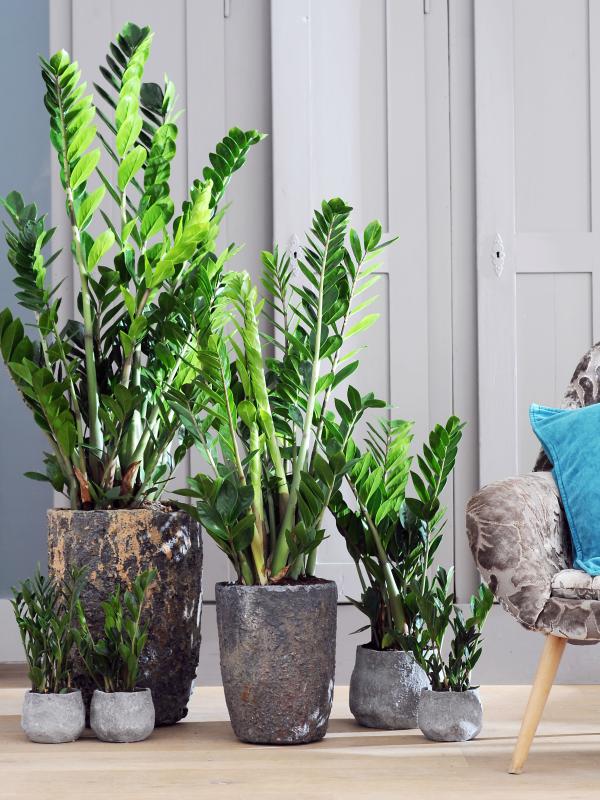Excess water
Whatever pot you buy, the most important thing is that excess water can drain off. So always make sure that there are holes in the bottom of the pot. To prevent your home from ending up awash, you can keep the plant in its grower pot - the plastic pot with drainage holes where your plant is in when you buy it - and place it in a watertight decorative pot. Make sure you always raise the plant so you can have about a centimetre of water in the decorative pot without the inner pot getting wet feet. You can do this with some pebbles, a couple of corks or an inverted little plate.
Or put your plant in a stone or plastic pot with holes in the bottom and place it on a dish which can collect any excess water.
Stone or plastic?
Stone pots are porous, they breathe a little. On the one hand that means that the water also evaporates through the pot, and so you need to water the plant more often. On the other hand, these tiny holes also ensure that air gets in. And that is important for many plants in order to keep the roots healthy and fresh. The advantage of plastic is that it is impermeable and therefore retains water well. The water that you give will end up with the plant and not in the sides of the pot. The disadvantage is that the roots only get air through the top of the soil. Tip! If you have a new stone pot, put it in a bowl of water for the first fifteen minutes. New pots are often so dry and thirsty that they suck up all the water when you water the plant for the first time, leaving nothing for the plant itself.
Heavy stuff
The weight is also something you need to consider when making your choice. If you are going to be moving a plant frequently, for example when it is placed in a dark corner and it needs to get some light regularly, plastic is nice and easy to carry. Stone pots are much heavier, and that can make quite a difference, particularly with large pots. On the other hand, a heavy pot will give more stability. A top-heavy plant in a plastic pot is more likely to topple over.
Perfect fit
Most plants do not like a pot that is too big. With that the water can accumulate in areas where the roots cannot reach, which causes excessive dampness and potential root rot. But they don't like them too small either; the plant would have no room to grow. In order to find out whether your plant is in a pot which is too small, you need to check the roots. If they are growing upwards or there are quite a lot of roots coming through the drainage holes at the bottom of the pot, it is clearly crying out for more space. Sometimes when you buy plants they are ready for a new pot. So always check whether your new plant needs a bigger home before you choose its permanent position.





